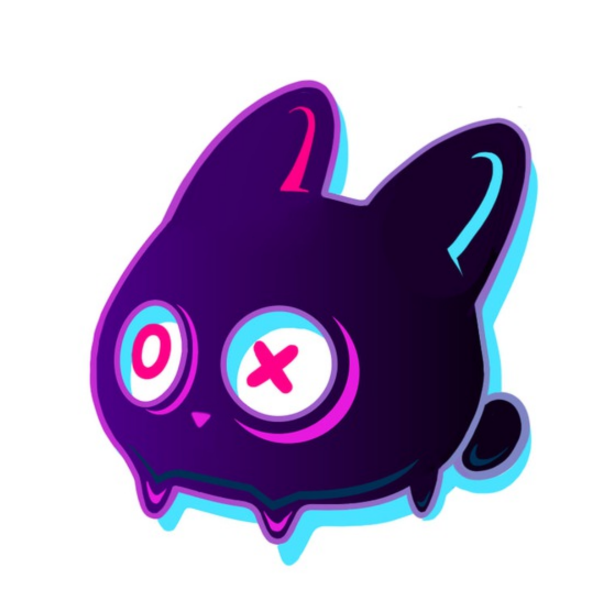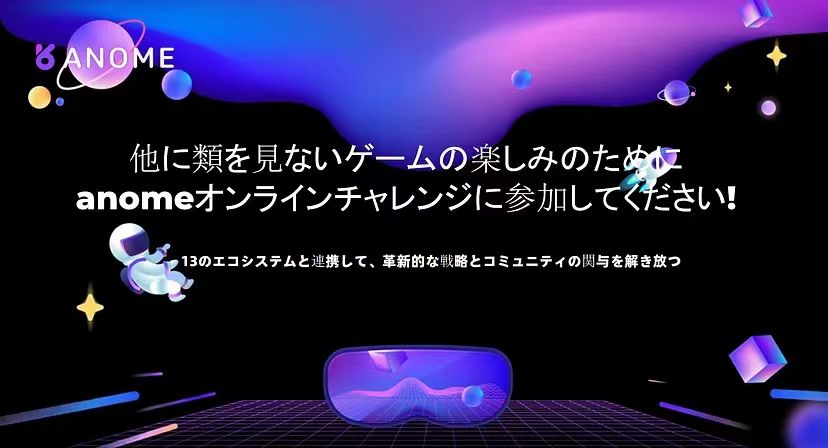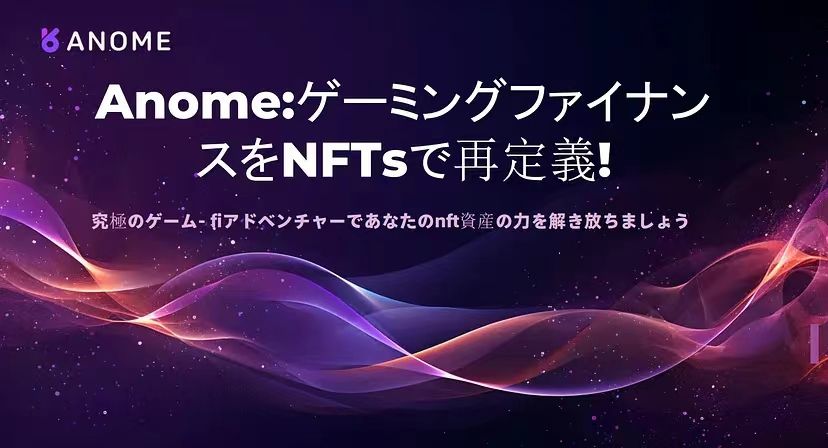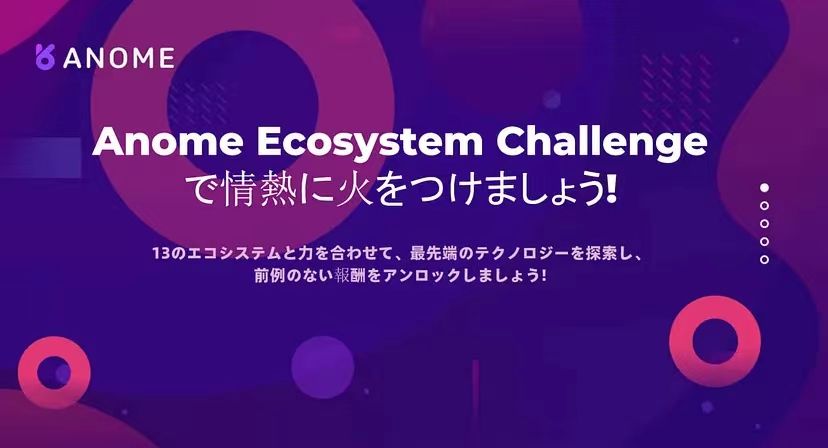Anome经济模型中文翻译
Anome平台包含五个模块:Plaza(空投广场)、NFT Marketplace(NFT交易平台)、Anome Studio、DeFi和Anome Land Meta Verse(糯米大陆元宇宙)。Anome的经济模型是基于DID技术合约,通过用户的深度画像定位,通过五个模块逐步将用户从轻度用户转化为重度用户。不同的用户级别在平台的活动内容、经济模型的可持续性和交互深度上有所区别,从而实现更高的真实转化率和粘性。
Anome的轻度用户包括羊毛党、开发者社区等新用户。此外还包括其他通过AMA活动了解后参与的新用户。他们的基本行为是领取空投撸毛赚取收益。合作的开发者社区的用户可以直接使用其账号登录Anome平台,无需重新注册,这种无障碍的转化提高了转化率,解决了种子用户的问题,并且保障了非常高的导流效果。对于这些轻度用户,Anome提供了空投广场(糯米广场)的功能。在这个层级群体中,一般有三种角色:羊毛党、老韭菜和开发者等垂直用户属于一种;Web3的其他合作方算一种;Anome的平台算一种。这些角色之间形成了正向循环经济模型。Web3项目方向Anome提供广告内容和空投代币。撸毛用户通过观看广告了解项目来领取空投赚收益。随着越来越多的用户参与领取空投,将推动更多的项目方愿意投入广告。更多的广告撸毛资源则又会引来更多的用户参与撸毛。不断循环正向生长。此外由于糯米广场具有大量的平面和3D空间设计,广告席位费将成为在这个环节重要的现金流来源。
中度用户在Anome平台主要参与NFT交易,进行游戏素材内容的铸造和开启盲盒挖取Nome积分行为。Anome NFT Marketplace将推出一种创新的开盲盒玩法,用户可以随机开出各种类型的NFT游戏素材,并获得其确权的利润分配,同时还有机会获得宝箱类型的Nome积分(未来1:1兑换token)。这种模式将服务于两种类型的中度用户:搬砖党和游戏内容的创作者归为一类;盲盒赌徒、NFT的价值投资者、Anome的高度信仰者归为另外一类。搬砖党和游戏内容的创作者通过支付USDT完成NFT的确权铸造(杠杆参数的设计实际可以形成低成本高收益),盲盒赌徒和NFT的炒客通过支付USDT开启盲盒获取NFT赚取未来的版税分成。并且可以随机获得Nome积分,放大了整体的博弈乐趣。Anome平台从中度用户的基础动作中获得USDT现金流收益。平台收取玩家支付的USDT的50%作为技术服务费,剩下的50%进入盲盒铸造者的钱包地址。开盲盒的玩家除了获得NFT外,还可以按照一套标准算法获得随机数量的Nome积分。
综合上述介绍,平台的现金流收益有两个来源:一是玩家支付的USDT的50%,二是NFT在市场流通时的服务费。通过这个循环,平台实现了现金流收入,并进一步促使用户沉淀在平台上。
第三个阶段,Anome Studio上线并陆续推出游戏。深度用户包括游戏玩家和游戏创作者、游戏工作室或者游戏开发公司,他们通过不同方式赚取积分收益。
在这个层级中,游戏玩家通过在平台上大量游戏时间的贡献来赚取积分收益;而游戏创作者则需要创作各种规则来提供游戏乐趣并从玩家手中赚取积分,Anome平台鼓励独立游戏开发者的参与,创作者可以自行制定游戏规则,例如出售道具或为竞速游戏博弈赚取抽水;平台会抽取创作者收入分成,并将流量转化为广告收入,同时给予游戏玩家积分奖励,形成有序循环。
在这个循环中,所有的价值都围绕Anome平台的Nome积分进行流转。而在这个环节,平台的现金流来源包括:首先,游戏创作者的收益分成(30%),类似于应用商店的模式;其次,游戏推流的积分收益。游戏创作者为了让自己的游戏在成千上万个Anome平台上的游戏中得到更多玩家的关注,需要抵押或支付一定积分来获得更高的推流和更多的曝光度,类似于抖音的算法;第三,在整个游戏过程中嵌入一些广告,从中获得广告收益。
重度用户是Anome平台上多个生态系统累积的用户,他们参与的内容不仅限于游戏交互,还延展到围绕Nome积分的其他衍生服务,包括质押借贷、理财和其他综合性内生态金融服务。
随着更多的衍生服务提供商加入Anome平台,在这个层级的经济模型中将出现四种角色:游戏玩家、游戏创作者、其他Web3的B端客户,以及Anome平台方。游戏用户可以通过参与游戏来获取大量积分,并利用这些积分进行质押借贷、理财等银行服务。游戏创作者、游戏开发公司和开发工作室也可以享受这些金融服务。平台方在提供金融服务中会赚取相应的服务费。同时,Anome平台还会引入其他Web3的B端项目方和服务方,例如交易所,质押借贷平台,社交平台等等,为Nome积分提供更多的服务内容和价值。平台通过这些服务商来锁定积分的流动性并获得市值管理收入。
综合上述,在第四个阶段,平台的收入来源主要有三个点:首先,类似于抖音的衍生推流服务的积分收益和服务费;其次,来自流量广告和市值收入;第三,来自Anome平台发行的独有权益NFT的收益。
Anome通过DID技术将用户的不同级别与各个环节相连接,确保用户在不同环节中享有特定的权益和优惠。用户的活动记录和DID技术的SBT中,级别决定了他们在平台上的权益和奖励。DID技术的SBT记录用户在平台上的各项活动,如文章阅读数量、领取空投、盲盒开启、NFT铸造等。通过完成这些活动,用户的级别逐渐提升,使其能够进入不同的用户级别环节。不同级别的用户在游戏、创作或理财等环节中获得不同的权益和奖励,例如更高的积分、更低的利息或更高的利润。通过等级的绑定,Anome实现了用户级别之间的粘性转化,最大程度地减少用户的损失率。整个经济模型形成了一个闭环,用户在不同环节中逐步提升,并得到相应的回报和优惠,从而大幅度提高用户参与度和平台的可持续增长。
原文参考:
Anome platform consists of five modules: Plaza, NFT Marketplace, Anome Studio, DeFi, and Anome Land Meta Verse. The economic model of Anome is based on DID (Decentralized Identity) technology contracts, which gradually converts users from light users to heavy users through targeted user profiling and engagement across the five modules. Different user levels exhibit variations in platform activities, economic sustainability, and interaction depth, resulting in higher conversion rates and user stickiness.
Light users on Anome include airdrop hunters, developer communities, and new users who participate after learning about the platform through AMA activities. Their basic behavior involves collecting airdrops to earn rewards. Users from collaborating developer communities can log in to the Anome platform directly with their existing accounts, eliminating the need for re-registration. This seamless conversion enhances the conversion rate and ensures a high level of user flow. For these light users, Anome offers the functionality of the Plaza (Airdrop Square). Within this user group, three types of roles can be identified: airdrop hunters, experienced users, and developers. These roles form a positive cycle in the economic model. Web3 projects provide ad content and airdrop tokens to Anome, and airdrop hunters earn rewards by watching ads and learning about projects. As more users participate in airdrop campaigns, project owners are incentivized to allocate more funds for advertising. The availability of more ad inventory attracts more users to participate, creating a continuous positive growth cycle. Additionally, the Plaza generates revenue through advertising fees due to its extensive graphic and 3D spatial design.
Medium users primarily engage in NFT trading, minting game-related content, and opening blind boxes to obtain Nome points on the Anome NFT Marketplace. An innovative blind box opening mechanism will be introduced, allowing users to randomly acquire various types of NFT game assets and earn profit sharing from the rights associated with those assets. Additionally, users have the opportunity to receive treasure chest-style Nome points (exchangeable at a 1:1 ratio with tokens). This model caters to two types of medium users: creators and consumers. Creators, including game developers and studios, mint NFTs by paying USDT(The design of leverage parameters can effectively generate low-cost and high-profit opportunities.). Consumers, such as blind box gamblers, NFT investors, and avid Anome supporters, open blind boxes with USDT, aiming to earn future royalty sharing from NFTs. They also have the chance to acquire random amounts of Nome points, enhancing the overall gaming experience. The Anome platform generates cash flow revenue from the actions of medium users. It charges a 50% technical service fee on USDT payments made by players, while the remaining 50% goes to the wallet address of the blind box creators. In addition to receiving NFTs, blind box openers can also obtain random quantities of Nome points based on a standardized algorithm.
In summary, the platform's revenue comes from two sources: 50% of USDT payments made by players and service fees generated from NFT transactions in the marketplace. Through this cycle, the platform achieves cash flow revenue and further encourages user engagement on the platform.
In the third stage, Anome Studio launches and introduces games gradually. Deep users include gamers, game creators, studios, or development companies who earn points through different activities. In this user level, gamers earn points by spending a significant amount of time playing games on the platform, while game creators generate points by providing enjoyable game experiences and earning points from players. Anome encourages the participation of independent game developers, allowing them to create their own game rules, such as selling in-game items or earning a share from competitive gaming. The platform deducts a share of the creators' earnings and converts traffic into advertising revenue while providing points rewards to gamers, creating a well-structured cycle. In this cycle, all the value revolves around the Nome points on the Anome platform. The platform's cash flow in this stage comes from three main sources. Firstly, game creators earn a 30% revenue share, similar to the model used by app stores. Secondly, there are point earnings from game promotions. To gain more attention from players among thousands of games on the Anome platform, game creators need to stake or pay a certain number of points to obtain higher promotion and more exposure, similar to the algorithm used by TikTok. Thirdly, advertisements integrated into the games provide additional revenue.
Heavy users on Anome are accumulated from various ecosystems and engage in not only gaming interactions but also other derivative services revolving around Nome points. These services include staking, borrowing, financial management, and other comprehensive internal financial services. With the participation of more service providers on the Anome platform, four types of roles emerge in the economic model at this level: gamers, game creators, other Web3 B2B customers, and the Anome platform itself. Gamers can earn a large number of points by participating in games and utilize them for banking services such as staking and borrowing. Game creators, game development companies, and studios can also enjoy these financial services. The platform earns service fees by providing these financial services. Additionally, the Anome platform introduces other Web3 B2B project partners and service providers, such as exchanges, lending platforms, and social platforms, to offer more services and value to Nome points. The platform leverages these service providers to lock in the liquidity of points and generate revenue from market management.
In conclusion, in the fourth stage, the platform's revenue primarily comes from three points: similar to TikTok's derivative promotion services, point earnings, and service fees; revenue from advertising and market management; and revenue from unique NFTs issued by the Anome platform.
Anome utilizes DID technology to connect users' different levels with various stages, ensuring that users enjoy specific benefits and privileges within each stage. The activities and user levels are recorded in the SBT (Smart Behavior Tracking) of the DID technology, which determines the privileges and rewards users receive on the platform. The SBT records users' activities on the platform, such as the number of articles read, airdrop participation, blind box openings, NFT minting, etc. By completing these activities, users gradually increase their levels, enabling them to access different user level stages. Different user levels receive different benefits and rewards in gaming, content creation, or financial management, such as higher points, lower interest rates, or higher profits. Through level binding, Anome achieves a sticky conversion between user levels, minimizing user churn rate. The entire economic model forms a closed loop, where users progress through different stages, receiving corresponding rewards and benefits, thereby significantly increasing user engagement and ensuring the platform's sustainable growth.
更多推荐
 已为社区贡献4条内容
已为社区贡献4条内容









所有评论(0)